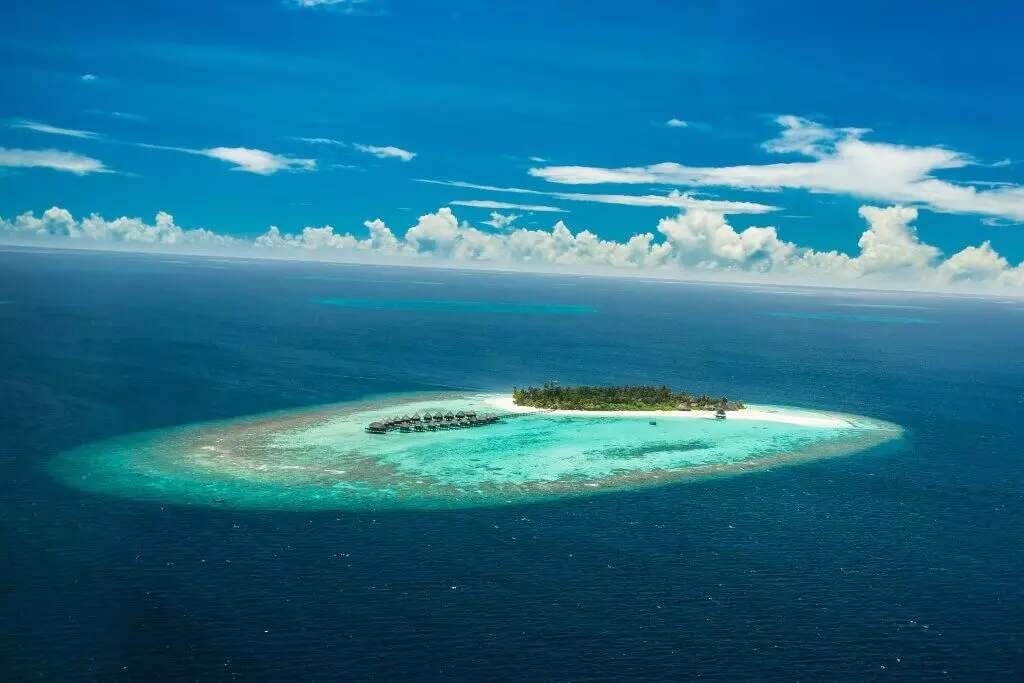Thriving with resilience
Atolls like the Maldives, once deemed doomed by rising seas, show surprising resilience by adapting to environmental shifts

We humans have settled in all sorts of precarious environments: parched deserts, barren tundra, high mountains and whatnot. None are precarious in quite the same way as atolls, the tiny, low-lying islands that dot the tropics. As the planet warms and the oceans rise, atoll nations like the Maldives, the Marshall Islands and Tuvalu have seemed doomed to vanish, like the mythical Atlantis, into watery oblivion.
Of late, though, scientists have begun telling a surprising new story about these islands. By comparing mid-20th century aerial photos with recent satellite images, they’ve been able to see how the islands have evolved over time. What they found is startling: Even though sea levels have risen, many islands haven’t shrunk. Most, in fact, have been stable. Some have even grown.
One study that rounded up scientists’ data on 709 islands across the Pacific and Indian Oceans showed that nearly 89 per cent either had increased in area or hadn’t changed much in recent decades. Only 11 per cent had contracted. Currents and waves can erode sandy shorelines, of course. But they can also bring fresh sand ashore from the surrounding coral reefs, where the remains of corals, algae, crustaceans and other organisms are constantly being crushed into new sediment. Another source of sediment is colourful parrotfish, which munch on coral and churn out white sand from their digestive tracts.
By examining how these interrelated and complex processes affected one particular island — Dhigulaabadhoo, an uninhabited curlicue of land a few miles north of the Equator — the scientists hope to better predict how other islands will change. Though the research suggests that atolls aren’t about to wash away entirely, it hardly means they have nothing to worry about. Global warming is putting coral reefs under severe strain. If, say, the ice sheets melted faster than expected, then sea-level rise could accelerate sharply.
Even so, scientists say, the revelation that atoll islands can adjust naturally to rising seas means the people who live on them have an opportunity to figure out how to cope with their changing environment. It means they have other options besides the most drastic one: abandoning their homelands altogether.
The scientists are confident that there’ll be islands in the Maldives 50 or 100 years from now. They’re not going to look like these islands; they’re going to be different. But there will be land here, and that is the challenge: How do you coexist with the change that’s coming? The Maldives needs to cultivate and recruit more scientific experts who can help guide the nation’s efforts to adapt. Without them, it’s hard to build infrastructure while minimising harm to reefs, or to design towns that are resilient to flooding.
Money is an issue, too. If scientists have access to technology and finance, then they think that they can save the Maldives. It is not all doomsday, believe the scientists. The problem is, scientists don’t have access to finance and technology.
If we humans can find a way to keep living and flourishing on atolls, it will bode well for our ability to continue doing so all across our warming planet. As Jon Barnett, a geographer at the University of Melbourne, put it: “If we can solve climate-change adaptation for atolls — ‘solve’ is the wrong word — then we can do it anywhere.”
Views expressed are personal



